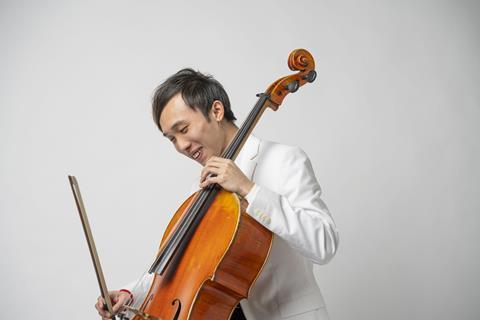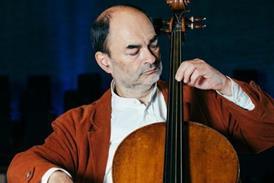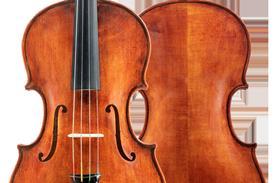Cellist Sihao He discusses the importance of tailoring one’s teaching to the specific needs of the student

Read more student and player experiences in our Education Hub
It’s often said one needs to tailor one’s teaching method to the student. How do you encourage versatility in your own teaching when approaching different students, in terms of personality, playing, goals, etc.?
1. Get to know your students
Understanding your student’s personality, playing ability, and goals is essential to determine the appropriate teaching method that suits their learning style. One can do this by asking questions and observing their reactions during the lessons, thereby drawing feedback on their progress and getting accustomed to their learning style.
2. Adapt and vary your teaching style/techniques
Once you understand your student’s needs, you can adapt your teaching style to suit their learning preferences. For example, some students may not have a proper training from an early age, in which case systematic training will be necessary for the students to improve their fundamentals. I strongly believe that it is extremely important to identify the exact problems your students are facing, giving them detailed methods on how to fix said problem. At the same time, teaching them how to be efficient and consistent in their practice is another important factor for improvement.
3. Provide feedback
Providing constructive feedback can help students understand their strengths and weaknesses, and how to improve. Tailor your feedback to each student, focusing on their specific needs and goals. An example would be: does your student respond to criticism well or not? Some students take criticism well, and they can transfer that into positive motivation. In that case, giving them more push would challenge them to do better. However, some students may be more sensitive, in which case a very positive, encouraging and caring way of approach would be better.
4. Be flexible
Be willing to adjust your teaching approach based on your student’s personality and progress. Flexibility is essential when it comes to teaching, and being adaptable can help ensure that you are providing the best possible learning experience for each student. Music is such a personal and creative subject. Of course, there are certain ’rules’ which musicians need to follow, but there’s always much more than that. Music to me is a mix of rational and perceptual. Musicians and teachers should have an open mind, trying out new ways with students and seeing which way would serve the music best while simultaneously inspiring your students to express their own voice.
How do you balance the teaching of fine details (such as technique) with larger-scale concepts (such as performance, stage presence, professional development)?
1. Prioritise
Determine which concepts are most important for your students to master at their current level of development. Like I mentioned before, if your student is just starting out, focusing on the fundamentals of technique may be more important than developing stage presence. If your student already has the fundamentals, it would be important to develop a plan for how you will address both the fine details and larger-scale concepts over time. Break down the larger concepts into smaller, manageable parts and integrate them into lessons as appropriate.
2. Integrate concepts
Look for opportunities to integrate larger-scale concepts into your teaching of fine details. For example, when teaching a specific technique—let’s say shifting—rather than only helping your student to perfect a shift specific to one passage, you could also discuss which type of shifts would serve this specific passage best (e.g. clear vs. audible shift), thereby helping them develop the skills/artistic process required in making one’s own musical decisions in other works as well.
3. Set goals
Setting specific, short-term goals for your students is a great way to relate both fine details and larger-scale concepts. Short-term goals like ’perform the whole work in next week’s studio class’, or ’play a recital in a month’, could motivate your students a lot and make them take action!
Students often find themselves unmotivated without goals. We often have that feeling of being lost when we are spending a lot of time in practice rooms, perfecting techniques and fine details, but to what end? Musicians need appreciation, recognition, and most importantly, an audience to communicate and share our voice with. Having opportunities to play for others can not only boost one’s motivation, but can also put larger scale concepts like performances or stage presence into practise. Doing competitions is also a great way to improve one’s playing. When you are pouring all your heart and sweat into the preparation, the need to get better can be one of the most thrilling experiences for a developing musician. Students could effectively witness the development of their own playing through this process, so whether one is ’successful’ or not is not important, as the process is far more valuable.
4. Encourage reflection
Encourage your students to reflect on their progress from the recital, studio class or competition they played. This can help them identify areas where they need to improve and set new goals for themselves.
Are there any things you say in your teaching to your students that you feel like you could apply to your own playing?
I quite often find myself learning a lot while teaching. By result of the nature of instrumental music, there are many things that are so intricate that words cannot capture. Therefore, I am often reminded through the lessons to be as specific as possible not only in my instruction, but in my own playing. For example, if the music needs a warmer, intimate tone colour, asking a student to ’imagine the warmth of someone you love and just play it’ may be effective for some, but too abstract for others. To complement this kind of inspirational instruction style, I would tell the students to use a slower and wider vibrato or less pressure and density on the bow thereby being more specific in a practical sense in order to help the student achieve the desired result.
That being said, it can often be difficult to describe what I want, because my musical approach can be very instinctive, (I do things that happen to work, but I have no idea exactly how I do it). As a result, I used to spend hours practising with a colour or mood in mind, but would struggle with the execution. So, I would analyse what I do and try to put it into words as if I were teaching someone else. Through this process of drawing from my own teaching, I could now execute what I want to convey in my music with much more ease and efficiency.
By exploring the possibilities of the cello through specific instruction to my students, I feel I can not only open many doors for them, but also for myself and the never-ending search for my own voice.
Cellist Sihao He joins the faculty of the Robert McDuffie Center for Strings as distingushed artist and lead cello teacher in autumn 2023.
Read: ‘We learnt from her a love and respect for music’ - cellist Natalia Shakhovskaya
Listen: The Strad Podcast Episode #56: Richard Markson on teaching tone and sound
Read: 8 ways to make practice playful: Susanna Klein
Read more student and player experiences in our Education Hub



































No comments yet